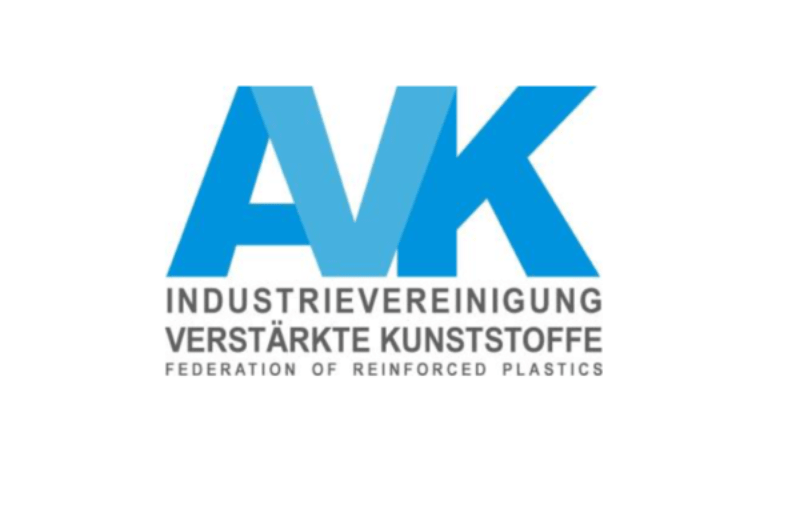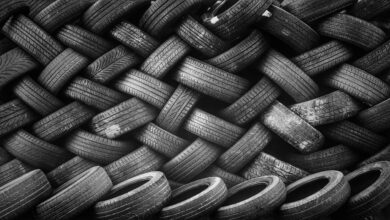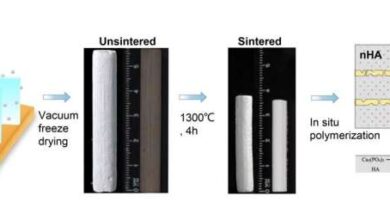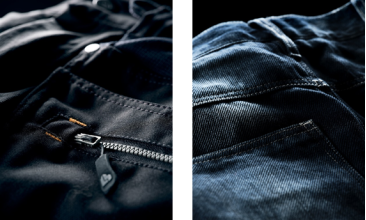The European GRP market in 2018

BASPAR/ IRANPOLYMER The AVK – Industrievereinigung Verstärkte Kunststoffe – has published its annual market report for glass fibre reinforced plastics (GRP). In 2018, the European GRP market is expected to grow again by around 2 % to an estimated total of 1.141 million tonnes
The GRP sector is recording its sixth consecutive year of growth. Germany remains the largest GRP/composites manufacturer in Europe with a total production volume of 229,000 tonnes although growth here is slightly lower than the trend for the overall European market. Thermoplastics are once again growing faster than the market as a whole.
Markets considered in this report
As in previous years, the European GRP Market Report 2018 analyses those European countries, for which production figures can be recorded and validated. Turkey is also included but the data are stated separately. The GRP materials considered here include all glass fibre reinforced plastics with a thermoset matrix and, in the thermoplastics market, glass mat reinforced thermoplastics (GMT) and long fibre reinforced thermoplastics (LFT). Data on European production of short fibre reinforced thermoplastics are only available as an overall quantity and therefore stated separately.
GRP production in 2018: Overall development
The European composites industry grew for the sixth consecutive year. In 2018, the European GRP market is expected to grow by 2 % to an estimated total of 1.141 million tonnes.
However, the trends differ significantly from country to country – not only in the manufacturing processes and materials used but also in terms of growth rates.
GRP production in Europe
Fig. 1: GRP production volume in Europe since 1999 (in '000 tonnes) (2018 = estimate)
[EasyDNNGallery|12166|Width|900|Height|900|position||resizecrop|False|lightbox|False|title|False|description|False|redirection|False|LinkText||]
GRP is mainly used in the transport/mobility industry and the construction/infrastructure sector. These two sectors remain the major buyers of GRP components, each accounting for around one third of the total production volume. As both sectors also play an important role in national economies, the long-term trend for the GRP market tends to follow the long-term growth trend in GDP.
Since composites today are often already used as standard, innovations do not have a noticeable effect on the market. As a result, no sudden changes in total production volume are to be expected over the coming years. The diverse nature of the GRP market means that fluctuations in one area are usually “smoothed out” by those in other applications.
Although GRP production in Europe continues to grow, its volume still lags behind the global market trend. Production volumes in Asia and America, in particular, have been growing at well over 2% in recent years.
Trends in the development of processes/components
[EasyDNNGallery|12167|Width|900|Height|900|position||resizecrop|False|lightbox|False|title|False|description|False|redirection|False|LinkText||]
Fig. 2: GRP production volumes in Europe according to processes/components – current year and the three previous years (kt = kilotonnes, 2018 = estimate)
SMC/BMC:
SMC (sheet moulding compound) and BMC (bulk moulding compound) components account for around one quarter of total production and are the largest market segment of the GRP industry. Semi-finished products manufactured using pressing or injection moulding processes are turned into components which are used primarily in the electro/electronic and transport sectors, especially in the automotive industry. This year, the SMC/BMC sector is growing slightly more slowly than last year at a rate of 1.8 %. Total production volume this year will be 285,000 tonnes. SMC accounts for 204,000 tonnes of this – more than two-thirds of production volume. Production in the BMC sector totals 81,000 tonnes and is growing much faster (3.8 %) than the SMC sector this year.
Open processes:
“Open processes” – hand lay-up and spray-up – continue to be the second largest segment in the European GRP market after SMC/BMC with total production of 239,000 tonnes. In 2018, however, open processes have been growing at a rate of just 0.4 % – well below the average. Over the last 20 years, their share of the total market has fallen by more than 15 %. Nevertheless, despite further anticipated declines over the coming years, open processes will continue to be an important area of GRP production. They are often the method of choice – especially in the field of bespoke and custom-made products or large components – due to their low investment costs. Typical products include housings for wind turbines, swimming pools, boat hulls or attachments, add-on components for special vehicles, prototypes and moulds.
RTM:
The segment of components manufactured using RTM (resin transfer moulding) processes has continued to grow steadily. Although the rate of growth was slightly below the market average at 1.4 %, the segment accounts for total production of 148,000 tonnes. This technology can be used for production on a very wide range of scales – from just a few units to larger series. Applications range from vehicle construction to wind turbines, aerospace, boat and ship building, sports and leisure.
Continuous processes:
The production of GRP components using continuous processing grew by 3.4 % in 2018 – well above the average rate. This continues the positive trend of recent years. Total production volume is now in the range of 151,000 tonnes.
The larger market segment for the production of flat panels grew by 3.2 % to 96,000 tonnes. These products have been used in vehicles for many years, primarily in truck side panels, caravan superstructures or the conversion of commercial vehicles. They are supplemented by applications in the area of facades. The sector has witnessed the development and promotion of a growing number of innovations, e.g. antiseptic panels for operating theatres, wakeboards, etc. Pultruded GRP profiles, the other segment in this area, grew by 3.8 % in 2018 – slightly faster even than flat panel production – to reach a total production volume of 55,000 tonnes. The pultrusion industry considers the construction and infrastructure sectors, in particular, to be major markets of the future. Examples include the public transport sector, bridge construction, window and staircase/ladder profiles, and reinforcement systems.
Pipes and tanks:
The market segment of GRP pipes and tanks, manufactured using centrifugal casting or filament winding processes, is expected to grow by an average of 2.1 % to a total production volume of 148,000 tonnes in 2018. After stagnating in 2016 and declining in 2017, this is a positive signal. GRP pipes and tanks are principally used in plant construction and public/private pipelines as well as by customers in the oil/gas and chemicals industries.
GMT/LFT:
In 2018, the markets for glass mat reinforced thermoplastics (GMT) and long fibre reinforced thermoplastics (LFT) continued to grow above the average rate at 4.8 % (3.6 % in 2017). From a long-term perspective, this market segment has almost quadrupled since 1999 – reaching a volume of 152,000 tonnes in 2018. During that period, its share of the total market has risen from 5 % to over 13 %.
LFTs are the largest group within the thermoplastic segment. For some years, however, tapes and “organosheets” have increasingly become the focus of attention. Typical applications for these products include underbody protection, bumpers, instrument panels or seat structures.
Application industries at a glance
Despite the different trends in the markets for the various manufacturing processes, the proportions of GRP used by the major application industries in Europe remain the same as last year. The transport and construction sectors each consume one third of total production. Other application industries include the electro/electronics sector and the sport and leisure segment (see Fig. 3).
[EasyDNNGallery|12168|Width|900|Height|900|position||resizecrop|False|lightbox|False|title|False|description|False|redirection|False|LinkText||]
Fig. 3: GRP production in Europe by application industry (year: 2018 = estimate)
GRP production in 2018 by country
As mentioned in the introduction, the market trends within Europe have been very different. While the overall market grew year-on-year by 2 % to 1,141,000 tonnes, growth in the countries reviewed in this report ranged from 0 % to 3.7 %. Fig. 4 shows the trends for each country/region in detail.
On a positive note, production did not decline in any of the regions considered. Above all, the Southern European countries of Spain/Portugal, France and Italy are reporting above-average growth rates this year.
Germany remains the largest GRP and composites market in Europe with a total production volume of 229,000 tonnes, although growth here slightly lagged behind the trend for the overall market. Market data have been available for Turkey since 2011 and are stated separately. The Turkish trade association is once again reporting strong growth of 7 % to a total volume of 300,000 tonnes. Once again, GRP production in Turkey grew faster this year than in any other European country.
The analysis by country highlights the various trends within Europe. There are major differences between the regional markets and these require individual analysis. For example, GRP processing in Germany has a strong focus on the transport sector and the electro/electronics industry. The market structure is different in Turkey (principally infrastructure) or Norway/Sweden (principally oil and gas industry).
[EasyDNNGallery|12169|Width|900|Height|900|position||resizecrop|False|lightbox|False|title|False|description|False|redirection|False|LinkText||]
Fig. 4: GRP production volumes in Europe – and Turkey – itemised by country/group of countries
(kt = kilotonnes / 2018 = estimated / Eastern Europe* = Poland, Czech Republic, Hungary, Romania, Serbia, Croatia, Macedonia, Latvia, Lithuania, Slovakia and Slovenia / Turkey** = Source: TCMA)
Other composite materials
Although current media reports and presentations at many conventions and trade fairs may create a different impression, GRP continues to be the largest material group in the composites industry by some distance. Glass fibres are used for reinforcement in over 95 % of the total volume of composites (short and long fibres, rovings, woven fabrics, mats …).
Short glass fibre reinforced thermoplastics
At approx. 1.47 million tonnes, the European market for thermoplastic, glass fibre reinforced compounds in 2017 was significantly larger than the observed market for GRP (thermosetting materials plus GMT/LFT) over the same period (Source: AMAC). In 2017 this sector grew by 8 %. The overall rate of growth has also accelerated compared to recent years.
Applications are primarily in the automotive sector but also in the electro/electronics sector and consumer goods.
Carbon fibre reinforced plastics
In 2018, global demand for carbon fibre reinforced plastics (CRP) was estimated at 128,000 tonnes. Europe accounted for 40,000 tonnes. Thus, CRP accounts for 1-2 % of the market for fibre reinforced plastics.
Outlook
Despite the difficulty of predicting future trends, it is possible to identify more general tides and currents which have the potential to influence the ongoing development of the GRP market:
The automotive sector is currently undergoing major changes. As well as stricter exhaust and emissions regulations, key themes include the roll-out of autonomous vehicles, increasing inner city traffic congestion problems, a greater degree of networking with digital systems, the collection and recording of corresponding vehicle data and, not least, new engine concepts. These developments are leading to a massive restructuring of the sector.
In a time of change, there are also opportunities for manufacturers to choose and invest in new materials. In addition to being light, GRP offers a wide range of advantages for many segments of the transport sector including electromobility. The lower weight reduces energy consumption, the materials are not only very durable but require little maintenance and do not conduct electricity or interfere with data transmission. They also offer excellent performance at low cost.
Alongside established materials used in series production, such as SMC/BMC and thermoplastics, established continuous processes, such as pultrusion, are again becoming a focus of attention.
The tightening of statutory requirements for certain chemical substances, such as styrene, cobalt octoate and titanium dioxide, is also affecting the methods used to process these materials. Only time will tell how these new regulations affect the industry.
Other developments offer hope for an increase in GRP production, e.g. in the area of digitisation. GRP has the potential to play a greater role in antenna construction or cladding buildings. Composites already play a key role in lightweight construction concepts used in the growing aerospace sector. The energy sector is also expanding. It has become increasingly important over recent years and this trend will continue for years to come.
Due to their versatility and exceptional suitability for combination with other materials, GRP and other composites offer outstanding potential in many applications. However, awareness of the materials is still too low for them to be widely considered by the responsible decision makers. This must change because composites are a good, if not better, choice. If customers can reassess these materials and composites become subject to standards/norms, then market growth (at an even faster rate than already experienced) is assured for the coming years.
Press enquiries:
Birgit Förster, Tel. +49 69-271077-13, [email protected]
About the AVK
The AVK, as the German professional association for fibre reinforced plastics / composites, represents the interests of producers and processors on a national and a European level.
Its services include the organisation of task forces, seminars and conferences as well as providing market relevant information (www.avk-tv.de).
The AVK is one of the four national pillars of the umbrella organisation of the German plastics converting industry (GKV) and a member of the European composites confederation EuCIA – the European Composites Industry Association.
The AVK is a foundation member of Composites Germany.






